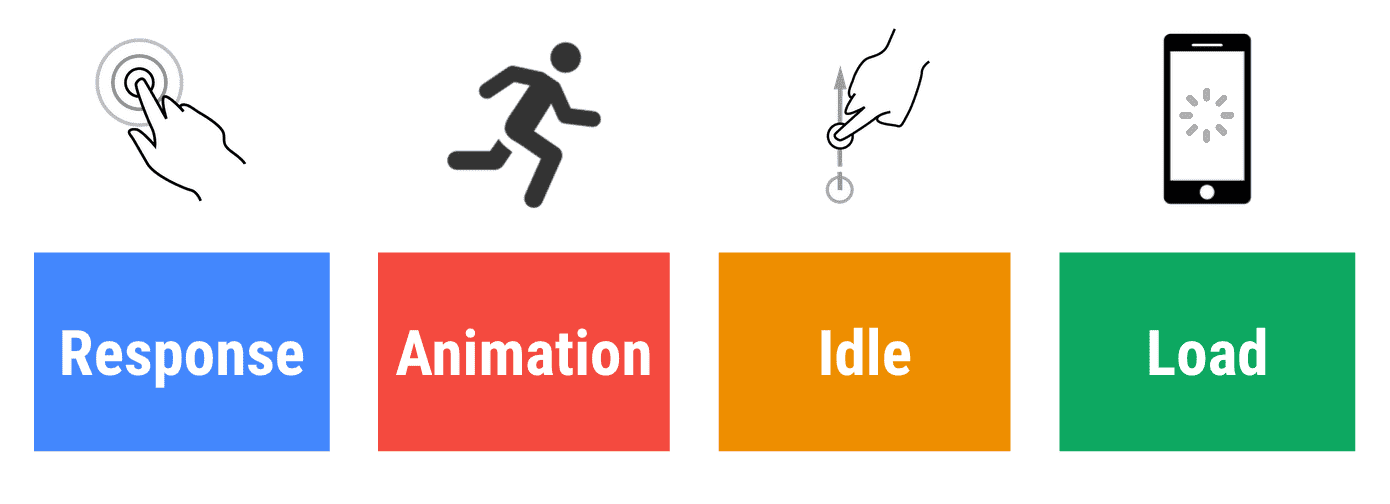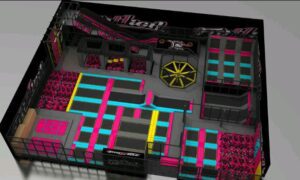When discussing performance in software, the conversation often centers on numbers: milliseconds shaved off a page load, frames per second, or Core Web Vitals scores. These are valuable indicators, but they do not tell the full story. What matters most is not what users can measure. It is what they feel.
The best kind of frontend performance is invisible. When everything works seamlessly, users do not notice it at all. They do not stop to admire how fast a page loads or how smooth a transition feels. They simply continue with their task, unaware of the engineering finesse behind the experience. That invisibility is the highest compliment a system can achieve.
Performance as Perception: Why Seamless Interaction Wins
Think about the way you scroll on an iPhone. No stutters, no pauses, just fluid movement that feels natural. Or consider Google Search: you type a query, and results appear instantly. No one marvels at these systems because there is nothing to notice. That is precisely the point.
Perception plays a more powerful role in user satisfaction than raw speed. As highlighted in Forbes Tech Council, the future of invisible interfaces depends on how seamlessly systems anticipate needs and reduce friction. A system might be technically efficient, but if its interactions are delayed, inconsistent, or jarring, users will still perceive it as slow.
In short, performance is perception. And perception is where users decide whether to trust, engage, and return.
Why Invisible Performance Matters for Business

Image: Customer Satisfaction Rating and Feedback Concept | Shutterstock
It’s easy to see invisible performance as a technical luxury, but it has profound business consequences. Every millisecond of delay increases the likelihood of abandonment. Amazon famously found that every 100ms of latency could cost 1% in sales. While not every company operates at Amazon’s scale, the principle is universal: smoother experiences drive retention and engagement.
Frontend engineering is at the heart of this. The way we structure data fetching, implement rendering pipelines, or design interaction flows directly shapes whether a customer stays or leaves. An interface that feels intuitive and effortless builds trust. Users may not be able to articulate why they prefer one app over another, but often, invisible performance is the deciding factor.
For technology leaders, this translates into measurable outcomes:
- Higher retention: Users are less likely to abandon slow or clunky experiences.
- Stronger engagement: Seamless interactions encourage exploration and deeper use.
- Reduced churn: Invisible performance creates loyalty by removing friction.
Performance, in other words, isn’t just a technical KPI; It’s a business strategy.
The Tools That Power Seamlessness

Image: Modern UI-UX design concept | Shutterstock
So what does it take to make performance invisible? Here are a few pillars that consistently make the difference:
1. GraphQL and Smart APIs
Traditional REST APIs often over-fetch or under-fetch data, leaving frontend engineers juggling multiple requests. GraphQL addresses this by enabling precise queries that return exactly what the UI needs. This reduces latency and creates predictable, efficient data flows. The result is less waiting, fewer flickers, and smoother experiences.
2. Caching and Intelligent Rendering
Caching strategies, such as prefetching likely next steps, utilizing service workers for offline access, and applying techniques like code splitting and lazy loading, ensure that users rarely encounter visible delays. The RAIL performance model from Google highlights four key stages of user experience: Response, Animation, Idle, and Load, showing how each contributes to seamless interaction.
 The RAIL Performance Model. Source: Google Web Dev
The RAIL Performance Model. Source: Google Web Dev
3. Accessibility as Performance
Accessibility isn’t separate from performance; it’s a dimension of it. A site that loads quickly but is unusable with a screen reader isn’t fast in any meaningful sense. Inclusive design makes experiences “faster” for everyone by reducing friction and confusion. Accessibility guidelines such as WCAG 2.1 emphasize clarity and consistency, qualities that also improve perceived performance for all users.
4. Monitoring and Feedback Loops
Tools like Chrome DevTools, Datadog, or Core Web Vitals dashboards help engineers continuously track where invisible performance is breaking down. The key is not just measuring time-to-first-byte or first paint, but aligning metrics with what users actually perceive.
Beyond Benchmarks: A Leadership Perspective

Image: Tablet with UX UI Designs | Shutterstock
As engineers, it’s tempting to chase micro-benchmarks: shaving 50ms off a render cycle, or obsessing over synthetic test results. But leadership means stepping back and asking: Does this make the experience feel better for the user?
Engineering leaders play a vital role in setting this mindset. Invisible performance requires long-term thinking:
- Investing in design systems that make consistency easy.
- Prioritizing maintainability over short-term hacks.
- Building automated testing pipelines that ensure every release preserves the seamlessness users expect.
This leadership perspective ensures that performance remains invisible, not just today but as products scale and evolve.
The Future of Invisible Interfaces

Image: Data Analyst using AI | Shutterstock
Looking forward, the frontier of invisible performance is adaptability. As interfaces become more personalized and predictive, systems will anticipate user intent before a click or tap is made.
- AI-assisted personalization will enable interfaces that adapt content and layout based on context.
- Predictive interfaces may load likely next steps before the user even initiates them.
- Adaptive UI flows will create experiences that feel tailored, reducing cognitive load and speeding up interaction without users realizing why they feel so smooth.
But with this power comes responsibility. Invisible performance must remain inclusive and ethical. Predictive design should never create confusion or exclude users. The goal isn’t to show off technology but to make it disappear.
Real-Life Lessons and Case Studies
Consider the research from the Nielsen Norman Group, which shows that even small delays, on the order of one second, interrupt a user’s cognitive flow. Or look at Google Web.dev’s Core Web Vitals, which emphasize user-centric performance metrics like “First Input Delay” and “Cumulative Layout Shift.” These metrics do not just measure technical speed; they also measure how fast it feels to users.
Smashing Magazine’s own performance work is a powerful example: In “Improving Core Web Vitals – A Smashing Magazine Case Study,” they walk through how they identified bottlenecks and tuned their system to achieve “green” scores. On CSS-Tricks, A Case Study on Boosting Front-End Performance describes how they optimized their site through smart design overhauls rather than brute-force tricks.
These examples remind us that invisible performance is not only about advanced tools; it is also about effective collaboration. It is about empathy, understanding what users need, and designing systems that quietly deliver.
Conclusion: The Value of What Users Do Not See

Image: Customer Review Satisfaction | Shutterstock
Invisible performance is the art of making technology vanish. It is not something users will thank us for directly, but they will reward it with trust, loyalty, and engagement. The task of frontend engineers is not to make users notice how fast or beautiful a system is, but to ensure they do not notice it at all.
For technology leaders, the challenge is to create environments where invisible performance is valued, where teams are supported to design for perception rather than just benchmarks.
The future of frontend engineering will not be defined by the milliseconds saved but by the moments never interrupted. When performance becomes invisible, we achieve what matters most: systems that let people simply do what they came to do.
About the Author
Juhi Deshkar is a frontend engineer and technology strategist with over five years of experience building high-performance, accessible, and scalable web applications. She focuses on frontend architecture and design systems that deliver seamless user experiences while aligning with product and business goals.
References
- CSS-Tricks (2017). A Case Study on Boosting Front-End Performance. https://css-tricks.com/case-study-boosting-front-end-performance/
- Forbes (2025). Invisible Interfaces, Amplified People: The Future Of Next-Generation Systems. https://www.forbes.com/councils/forbestechcouncil/2025/04/18/invisible-interfaces-amplified-people-the-future-of-next-generation-systems/
- Giga Spaces (2023). Amazon found that every 100ms of Latency costs them 1% in Sales. google.com/url?q=https://www.gigaspaces.com/blog/amazon-found-every-100ms-of-latency-cost-them-1-in-sales&sa=D&source=docs&ust=1758728454918527&usg=AOvVaw0FuexU–_y3q_OkwfkgmHU
- Google Web Dev (2020). Measure performance with the RAIL model. https://web.dev/articles/rail#optimizing-input-response
- Google Web Dev (2020). Web Vitals. https://web.dev/articles/vitals
- Graph QL (n.d.). Graph QL Official Website. https://graphql.org/
- IBM (n.d.). What is REST API? https://www.ibm.com/think/topics/rest-apis
- Jakob Nielsen (1993). Response Times: The 3 Important Limits. https://www.nngroup.com/articles/response-times-3-important-limits/
- Smashing Magazine (2021). Improving Core Web Vitals: A Smashing Magazine Case Study. https://www.smashingmagazine.com/2021/12/core-web-vitals-case-study-smashing-magazine/



































